Have you ever wondered if your curious feline should be nibbling on your salad’s leftovers, or if letting your cat eat vegetables is a risky move? For many cat owners, the answer isn’t so obvious. Cats are known for their preference for meat, but with more people enjoying healthy, plant-rich diets, the question of whether cats can eat vegetables has become more common. In this comprehensive guide, we’ll unpack everything you need to know, busting common myths, revealing crucial facts, and showing you how to keep your cat safe and healthy when it comes to vegetables and human food.
Read on to get expert insights, real examples, and practical tips that every cat owner needs to confidently navigate their pet’s nutrition!
Curious If Cats Can Eat Vegetables? Busting Myths About Feline Nutrition
Many people believe that since vegetables are healthy for humans, they must also be a good fit for cats. This assumption, however, overlooks the unique nutritional requirements that cats have as obligate carnivores. The main keyword here is “can cats eat vegetables?” Yes, some vegetables are safe for cats in small, cooked amounts, but their diet should never be centered around plant material. Instead, a cat’s digestive system is built to efficiently process and absorb nutrients from animal proteins and fats, not from an abundance of vegetables or fruits.
It’s crucial for cat owners to distinguish between what cats can eat and what they should eat regularly. While some plant-based foods may seem harmless, others can be toxic, and understanding this distinction will help you make informed decisions about feeding your cat. Throughout this article, you’ll learn which vegetables are safe for cats, why certain vegetables should always be avoided, and how these foods fit (or don’t fit) within a balanced diet for your feline friend.

The science behind ‘can cats eat vegetables?’
Which vegetables are safe (and unsafe) for your feline friend
How vegetables fit into a balanced cat diet
Guidance on feeding your cat human food wisely
The role of an obligate carnivore in diet planning
Understanding Feline Nutrition: Can Cats Eat Vegetables as Obligate Carnivores?
Why Cats Are Obligate Carnivores and What That Means for Their Diet
Cats are considered obligate carnivores , meaning their dietary needs revolve primarily around animal-based protein. Their bodies have evolved to obtain essential amino acids, such as taurine and arginine, directly from meat, and they lack the enzymes needed to extract all necessary nutrients from plant material. This natural adaptation makes their nutritional requirements quite different from omnivorous animals or even dogs.
Because of their biology, cats require certain nutrients—like vitamin A, niacin, and specific fatty acids—that are abundantly found in animal tissues but scarce or missing in plant sources. While it's tempting to think that feeding your cat a variety of fruits and vegetables would increase their health benefits, these foods should only ever be a supplement to their main protein-rich meals. Feeding your cat mostly vegetables will not provide them with complete and balanced nutrition, and attempting to substitute animal protein with plant matter can actually cause health problems for your pet.
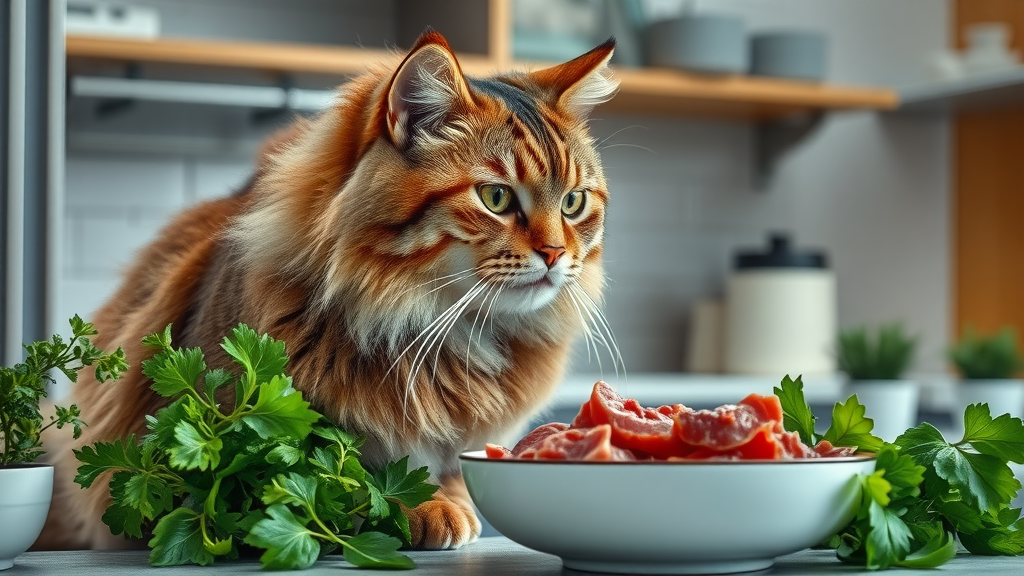
Do Cats Eat Vegetables in the Wild or As Human Food?
In the wild, cats usually eat meat almost exclusively—think rodents, birds, and small reptiles. While some wild cats may indirectly ingest tiny amounts of plant material from the stomach contents of their prey, this is not the same as actively seeking out or eating vegetables and fruit. Domestic cats, by contrast, sometimes show curiosity toward human food , including vegetables found on the dinner table, but this doesn’t mean such foods are suitable for their regular diet.
It’s essential to remember that human foods —even those that seem harmless, like green beans or carrots—should be introduced cautiously and only in moderation. “Cats are obligate carnivores, which means meat is a non-negotiable part of their nutritional needs,” says Dr. Paula Simons, DVM. While offering a small bite of certain vegetables occasionally is fine, the bulk of a cat’s nutrition must always come from high-quality animal protein sources. Prioritizing species-appropriate food keeps your feline friend healthy and thriving.
The Truth About Human Foods: Can Cats Eat Vegetables and Fruits Safely?
Fruits and Vegetables: What Human Foods Are Safe for Cats?
The world of human food is vast, and it’s tempting to want to share our healthy choices with our pets. When considering fruits and vegetables for cats , it’s essential to know which options are safe, as some can offer occasional health benefits like fiber or extra hydration, while others can be downright dangerous. Green beans, carrots, peas, zucchini, and cucumber are examples of vegetables cats can eat in small amounts, as long as they’re cooked and unseasoned.
Conversely, some vegetables are toxic to cats and should never be given as treats or supplements. The risks of feeding your cat the wrong type of vegetable range from mild digestive upset to severe, even life-threatening toxicity. It is always best to stick to evidence-based choices if you want to give your cat a safe treat plucked from your fridge or pantry. The table below highlights safe versus unsafe vegetables in your cat’s diet.
Vegetables Cats Can Eat (Safe in Moderation) |
Vegetables Cats Should Avoid (Toxic/Unsafe) |
|---|---|
Green beans |
Onion, Garlic |
Carrots |
Chives |
Peas |
Raw Potatoes |
Zucchini |
Tomatoes |
Cucumber |
Mushrooms |
What Vegetables Are Safe for Cats? Practical Examples for Your Feline Friend
Cats Can Eat Green Beans and Other Cat-Friendly Veggies
If your feline friend has developed a taste for certain vegetables in their diet , you’re not alone. Many cat owners report that their cats enjoy a nibble of green beans, peas, or even a soft, cooked carrot. Green beans in particular are a favorite—offering a low-calorie source of fiber and trace nutrients while being generally safe in small portions. Just remember, the key is “small amount.” Cats do not have the same digestive enzymes as humans, so they will only gain modest health benefits from such produce.
When allowing cats to eat these veggies, always serve them cooked and unseasoned. Avoid adding oil, butter, or spices, as these additions can upset your cat’s digestive system or even lead to toxicity. If you’re using vegetables as a treat or a way to encourage hydration, choose options like green beans, peas, or zucchini, and offer them as tiny, occasional snacks. The best way to keep your cat happy and healthy is to make their usual food the priority, adding vegetables as a once-in-a-while enrichment rather than a staple part of their meal.
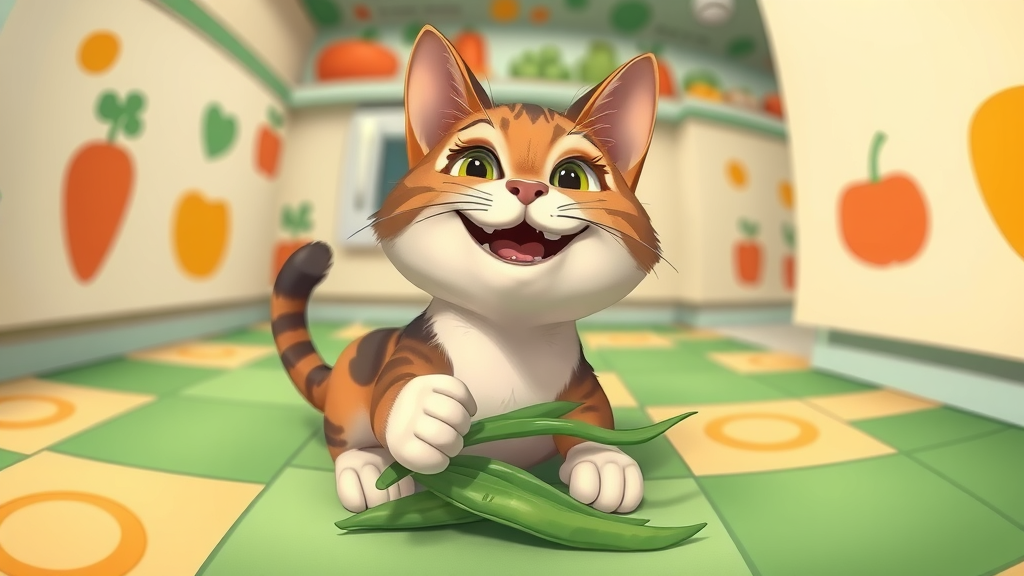
Preparing and Serving Vegetables in Their Diet: Tips for Feeding Your Cat Safely
When you decide to give your cat vegetables , there are important safety rules to follow. Wash and peel all veggies thoroughly to get rid of dirt and potential chemicals. Steam vegetables until soft to improve digestibility—raw vegetables can be too tough for your cat’s teeth and stomach. Next, chop vegetables into tiny, bite-sized pieces to prevent choking or intestinal blockages.
Whenever you introduce a new food—especially plant material—offer only a small portion and closely monitor your cat for any adverse reactions. Some cats may display an upset stomach, vomiting, or diarrhea after eating vegetables, especially if it’s their first time. If your cat enjoys veggies and tolerates them well, it’s safe to use small amounts as the occasional snack, but never let them displace essential animal-based nutrients.
“Vegetables can offer fiber and trace nutrients but should never replace animal-based proteins in your cat’s diet,” says veterinary nutritionist Lisa M. Freeman, DVM, PhD.
Wash and peel veggies thoroughly.
Steam them until soft.
Chop into small, bite-sized pieces.
Offer a tiny amount and monitor for reactions.
What Vegetables Can a Cat Not Eat? Critical Dangers to Avoid When Feeding Your Cat Human Foods
Vegetables Toxic to Cats: Garlic, Onion, Leeks, and More
Not all vegetables are safe for curious felines. Onions, garlic, chives, and leeks are particularly dangerous to cats ; even small amounts can cause potentially fatal anemia by damaging your pet’s red blood cells. Mushrooms, raw potatoes, and tomatoes also fall into the hazardous category, as they contain compounds that can upset the digestive system and lead to neurological or cardiac problems in cats.
Because toxicity symptoms can range from mild gastrointestinal upset to severe collapse, it’s vital for all cat owners to familiarize themselves with the full list of dangerous vegetables. “Even small quantities of onion or garlic can cause serious health issues for cats. Always err on the side of caution,” warns Dr. Jessica Herman, DVM. If you think your cat has ingested something unsafe, contact your veterinarian immediately for guidance.
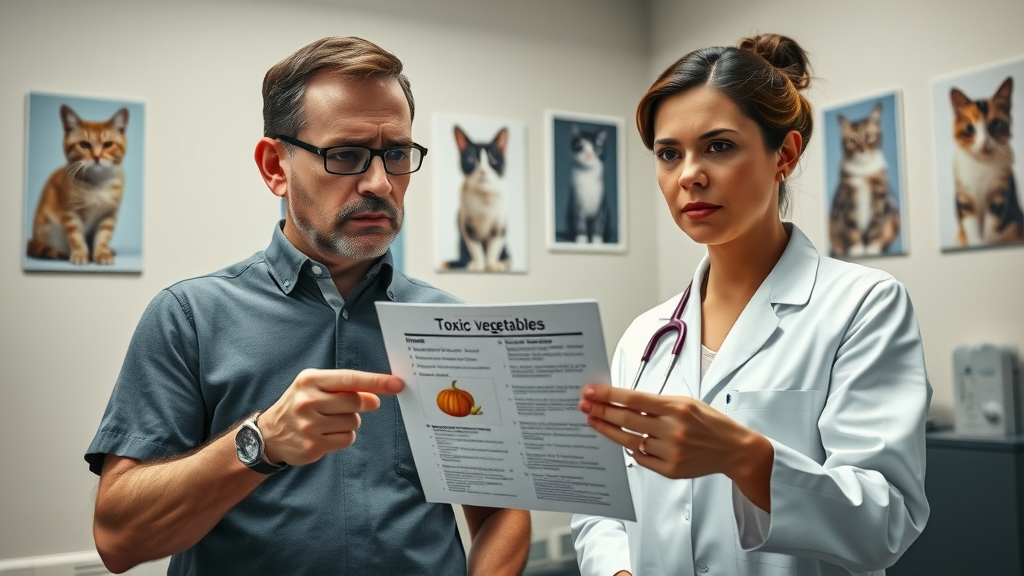
Should Indoor Cats Eat Vegetables? Benefits and Limitations in a Domestic Cat’s Diet
Pros and Cons of Including Vegetables in Their Diet
The idea of supplementing cat food with vegetables often comes from a desire to mirror human health practices, but indoor cats still have the same biology as their wild relatives. Vegetables do provide some benefits for cats, such as extra fiber to support healthy digestion and vitamins for overall wellness—yet these benefits are modest, and cat’s digestive system is still best at handling animal proteins and fats.
However, vegetables also come with limitations and potential drawbacks. Some are high in starch or contain compounds that cats can’t break down efficiently, and overfeeding any type of plant material can result in digestive issues or nutrient imbalances. Ultimately, vegetables should be used only as an addition to a complete and balanced cat diet, not as a substitute. Thoughtful portions and consultation with your vet are essential for any dietary changes, especially with special-needs cats.
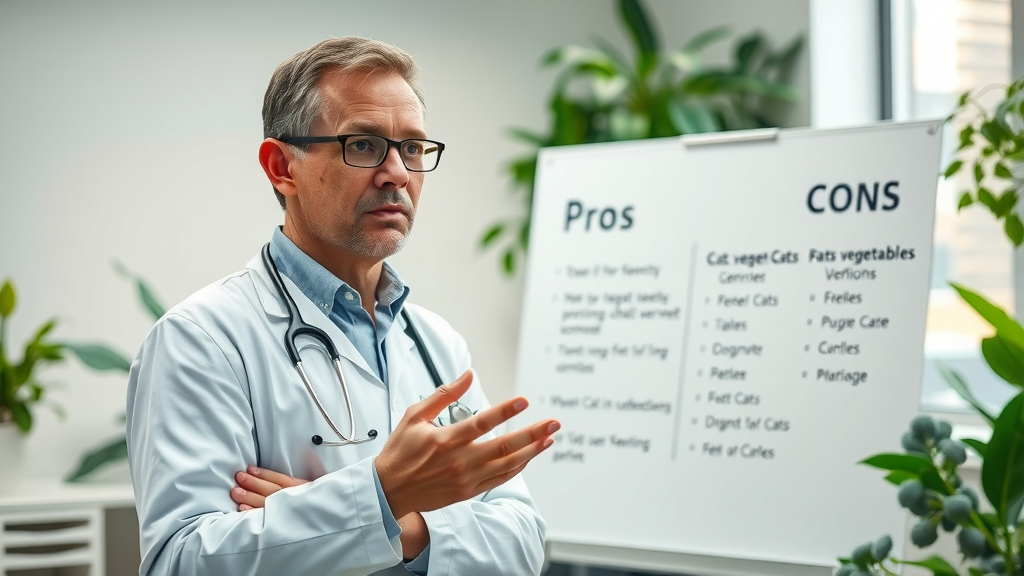
Is Human Food Safe for Cats? Exploring Other Non-Vegetable Human Foods Cats Can Eat
Common Human Foods Cats Can Eat Safely (in Moderation)
While human food is often irresistible to curious felines, most is not designed for their dietary needs. However, a few carefully-chosen options from your kitchen can act as special treats. Plain, cooked chicken is an excellent protein source, and small bites of cooked eggs or rice can be safely given to most cats. Some cats can tolerate a bit of plain, lactose-free dairy, though many are lactose intolerant.
Don’t forget about catnip or specialized cat grass, which can enrich your pet’s environment and diet in moderation. When feeding your cat any human foods , never add spices, sauces, or artificial flavors—these can cause digestive upset or toxicity. Always double-check that a new food is safe for cats and serve it in tiny portions alongside their regular, species-appropriate meals.
Plain cooked chicken
Steamed rice
Eggs (cooked, not raw)
Select dairy (if lactose-tolerant)
Catnip and cat grass
People Also Ask: Expert Answers About Cats, Vegetables, and Human Foods
What vegetables are safe for cats?
Safe vegetables for cats include cooked green beans, peas, carrots, zucchini, cucumber, and broccoli in small, bite-sized amounts. Always cook vegetables to improve digestibility and avoid added salts or seasonings.
What vegetables can a cat not eat?
Cats should never eat onions, garlic, chives, leeks, raw potatoes, tomatoes, or mushrooms as these vegetables are toxic and can cause severe health issues.
Do indoor cats need vegetables?
While cats don’t need vegetables nutritionally since they are obligate carnivores, small amounts of certain vegetables can supplement fiber or support digestive health when recommended by a veterinarian.
What human food is safe for cats?
Safe human foods for cats include plain cooked meats, certain cooked eggs, small amounts of plain rice, and some fruits and vegetables. Always avoid added spices, flavorings, or potentially toxic ingredients.
"An occasional bite of the right vegetable can be an enriching treat, but your feline friend’s mainstay should always be protein-rich cat food," says Anna Madison, certified veterinary nurse.
Frequently Asked Questions About Cats, Vegetables, and Human Food
Can vegetables benefit cats with special dietary needs?
Yes, in some cases, vegetables can offer helpful fiber for cats with certain digestive issues or weight problems. Vets may recommend specific vegetables to supplement cat food, but this should always be done under professional advice. The amount and type will depend on your cat’s health conditions.
How do I know if my cat has eaten a toxic vegetable?
Signs of vegetable toxicity in cats include vomiting, diarrhea, drooling, lethargy, difficulty breathing, or pale gums. If you suspect your cat has ingested a toxic vegetable such as onion or garlic, seek immediate veterinary care to prevent serious health consequences.
Can kittens eat vegetables as part of their diet?
Kittens have very sensitive digestive systems and higher protein demands than adult cats. Vegetables are usually unnecessary for kittens and can upset their digestion. Focus on feeding your kitten a complete and balanced kitten food, introducing any new treats only with your veterinarian’s approval.
Should I consult a vet before adding vegetables to my cat's diet?
Absolutely. Before making any changes or adding new foods, including vegetables, to your cat’s diet, always talk to your veterinarian. They can help determine the right choices for your cat’s health status, age, and dietary needs, ensuring your feline friend stays safe.
Green Beans for Cats: A Closer Look at a Popular Vegetable for Feline Diets
Of all the vegetables cats can eat, green beans are one of the most popular options. They’re easy to prepare, low in calories, and can offer gentle fiber for cats needing weight management support or digestive aid. To serve green beans, wash them thoroughly, steam until soft, and chop into very small pieces before offering a tiny amount as a treat. Never replace your cat’s meat-based meals with vegetables, but feel free to let your feline sample a green bean for an occasional, healthy bit of variety.
Balancing Your Cat’s Diet: Can Cats Eat Vegetables as a Supplement, Not Substitute?
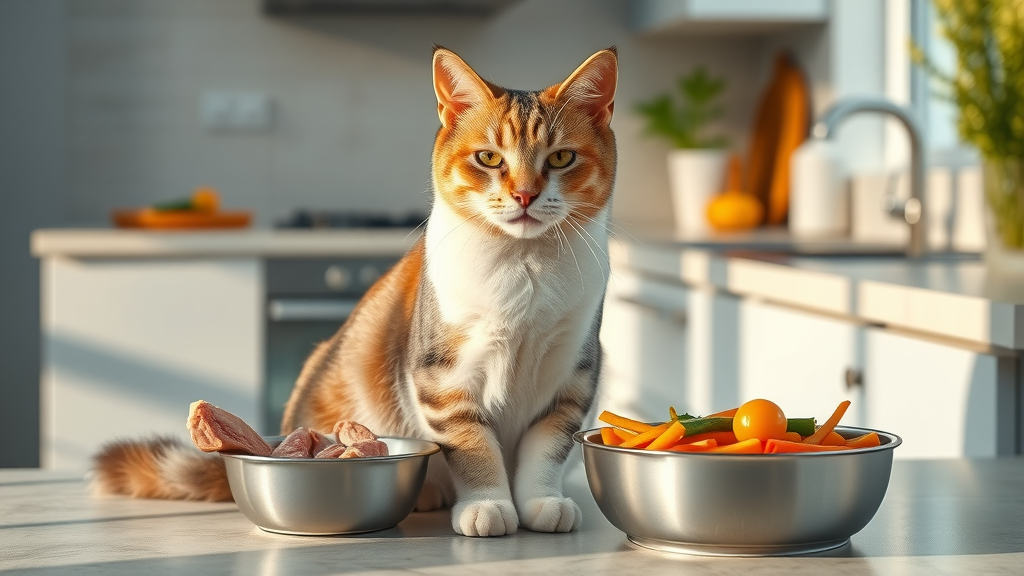
The secret to optimal feline health is a diet that’s complete and balanced —meaning all of your cat’s core nutritional requirements are met, primarily with animal proteins and supplemented (if desired) by safe, fiber-rich veggies in very small quantities. Remember, vegetables are a supplement, not a replacement, in the world of cat food. Always prioritize high-quality, protein-rich options and use plant matter sparingly, if at all.
Always use cooked, unseasoned vegetables
Feed only in moderation
Monitor for digestive problems
Avoid high-starch veggies
The Bottom Line: Responsible Feeding of Vegetables and Human Foods to Cats
Cats are obligate carnivores; animal protein comes first
Some vegetables are safe as occasional treats
Always avoid known toxic vegetables
Consult your veterinarian for diet changes
Ready to Level-Up Your Cat Care? Subscribe for More Expert Guides!
Want more tips, stories, and pet care guides delivered straight to your inbox? Join our monthly PawPress newsletter and stay in the loop with the latest for your furry friends. 🐾 Subscribe now — your pets will thank you!
When considering whether cats can eat vegetables, it’s essential to understand their dietary needs as obligate carnivores. While their primary nutrition should come from animal-based proteins, certain vegetables can be offered as occasional treats.
Safe Vegetables for Cats:
Carrots: Rich in beta-carotene and fiber, cooked carrots can be a healthy snack when cut into small, manageable pieces. ( petturex.com )
Green Beans: Low in calories and high in fiber, cooked green beans can aid in digestion and weight management. ( chewy.com )
Zucchini: Offering hydration and essential nutrients, zucchini is safe for cats when cooked and served without seasoning. ( esg.petco.com )
Pumpkin: Known for its digestive benefits, plain cooked pumpkin can help with both constipation and diarrhea. ( petturex.com )
Vegetables to Avoid:
Onions and Garlic: These members of the allium family are toxic to cats and can damage red blood cells, leading to anemia. ( vetstreet.com )
Tomatoes: Unripe tomatoes and the green parts of the plant contain solanine, which is harmful to cats. ( cats.com )
Avocados: Containing persin, avocados can cause vomiting and diarrhea in cats. ( petturex.com )
Guidelines for Introducing Vegetables:
Preparation: Always cook vegetables to enhance digestibility and cut them into small pieces to prevent choking. ( purewow.com )
Moderation: Vegetables should constitute no more than 10% of your cat’s daily caloric intake. ( chewy.com )
Avoid Seasonings: Do not add salt, spices, or oils, as these can be harmful to cats. ( petsfoodsafety.com )
While some vegetables can be safely incorporated into your cat’s diet, they should only serve as occasional supplements to their primary meat-based nutrition. Always consult with your veterinarian before introducing new foods to ensure they align with your cat’s specific health needs.
 Add Row
Add Row  Add
Add 



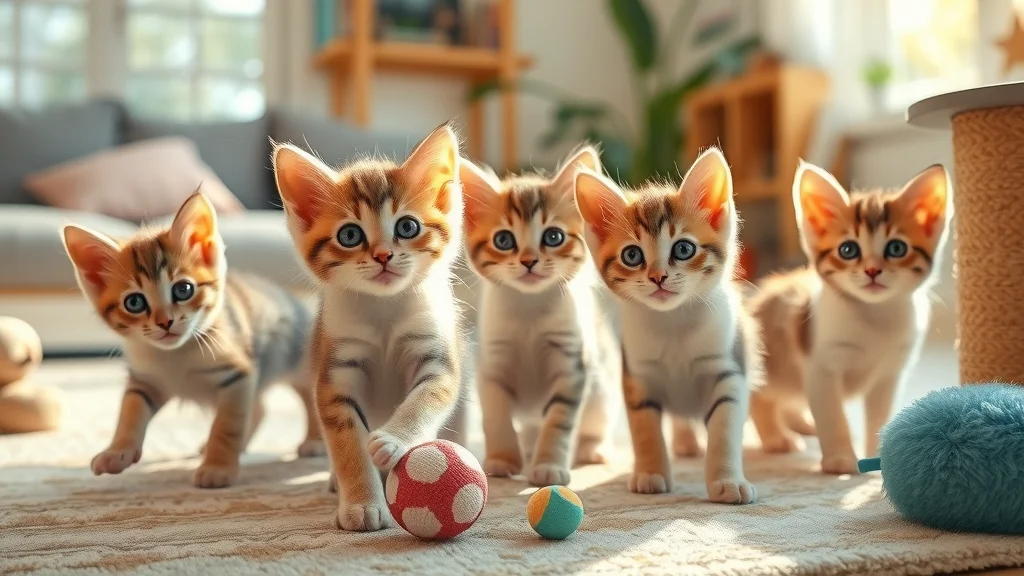
Write A Comment